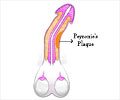Removing dental plaque and calculus, that is the build-up of tartar or hard plaque, is a big part of maintaining oral health.

‘Formation of tiny bubbles around the head of dental ultrasonic scalers is key to the plaque cleaning process.’





The team believe that the methods developed in the study will help to test new instrument designs to maximize cavitation, with the aim of designing ultrasonic scalers that operate without touching the tooth surface. By doing so, the process of teeth cleaning at the dentist would become both less painful and more effective.The findings, published in PLOS ONE, are the first to prove that cavitation takes place around the free end of ultrasonic scalers.
Professor Damien Walmsley, from the School of Dentistry at the University of Birmingham, explained, “Removing dental plaque and calculus, that is the build-up of what we know as tartar or hard plaque, is a big part of maintaining oral health and a regular occurrence in dental check-ups. These findings will help us to understand how to make the tools as effective as possible.”
A Satelec ultrasonic scaler, operating at 29 kHz with three different shaped tips, was studied at medium and high operating power using high speed imaging at 15,000, 90,000 and 250,000 frames per second, and the tip displacement was recorded using scanning laser vibrometry.
The team were not only able to show that cavitation occurred at the free end of the tip, but that it increases with power, and the area and width of the cavitation cloud varies for different shaped tips.
Advertisement
Source-Newswise












